
Frans Hals the Elder was a Dutch Golden Age painter. He lived and worked in Haarlem, a city in which the local authority of the day frowned on religious painting in places of worship but citizens liked to decorate their homes with works of art. Hals was highly sought after by wealthy burgher commissioners of individual, married-couple, family, and institutional-group portraits. He also painted tronies for the general market.
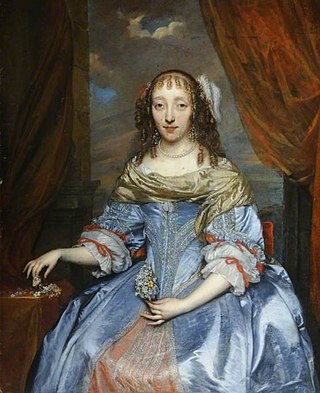
Gonzales Coques was a Flemish painter of portraits and history paintings. Because of his artistic proximity to and emulation with Anthony van Dyck he received the nickname de kleine van Dyck. Coques also worked as an art dealer.

Cornelis de Vos was a Flemish painter, draughtsman and art dealer. He was one of the leading portrait painters in Antwerp and is best known for his sensitive portraits, in particular of children and families. He was also successful in other genres including history, religious and genre painting. He was a regular collaborator with Rubens.

Piet Verhaert, also known as Pieter Verhaert, birthname is Petrus Josephus Verhaert was a Belgian painter and etcher painter of genre scenes, cityscapes. interiors, figures and portraits. He was also a designer of decorative panels. He was a member of various avant-garde artist associations such as Les XX and De XIII which were founded out of dissatisfaction with the conservative selection policies of the official academic Salons. He was a teacher at the Academy of Antwerp.

Jan Cossiers was a Flemish painter and draughtsman. Cossiers' earliest works were Caravaggesque genre works depicting low life scenes. Later in his career he painted mostly history and religious subjects as well as portraits. Cossiers was one of the leading painters in Antwerp after Rubens' death in 1640 and one of the most original colorists in 17th-century Flanders. He was an accomplished draughtsman who created some sensitive portrait drawings executed in a very varied and fluid manner.

Pieter Thijs, Peter Thijs or Pieter Thys was a Flemish painter of portraits as well as religious and history paintings. He was a very successful artist who worked for the courts in Brussels and The Hague as well as for many religious institutions. His work was close to the courtly and elegant style of Anthony van Dyck and his followers.
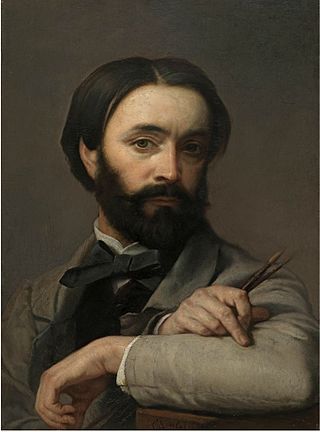
Charles Verlat or Karel Verlat was a Belgian painter, watercolorist, engraver (printmaker), art educator and director of the Antwerp Academy. He painted many subjects and was particularly known as an animalier and portrait painter. He also created Orientalist works, genre scenes, including a number of singeries, religious compositions and still lifes.
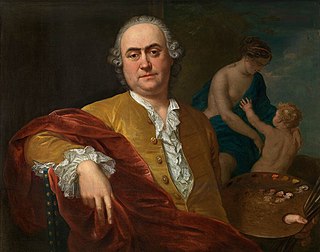
Balthasar Beschey was a Flemish painter, draughtsman and decorative painter of interiors. He started his career as landscape painter but later on switched to history and portrait painting. He played a prominent role in the development of the Academy of Arts in Antwerp and as a teacher.

Charles Emmanuel Biset or Karel Emmanuel Biset was a Flemish painter who had a peripatetic career working in various cities and countries including his hometown Mechelen, Paris, Annonay, Brussels, Antwerp and Breda. He worked in many genres including genre scenes of interiors with merry companies and gallery paintings, history painting, still life and portraiture.
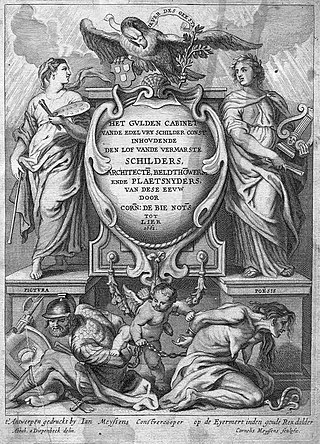
Het Gulden Cabinet vande Edel Vry Schilder-Const or The Golden Cabinet of the Noble Liberal Art of Painting is a book by the 17th-century Flemish notary and rederijker Cornelis de Bie published in Antwerp. Written in the Dutch language, it contains artist biographies and panegyrics with engraved portraits of 16th- and 17th-century artists, predominantly from the Habsburg Netherlands. The work is a very important source of information on the artists it describes. It formed the principal source of information for later art historians such as Arnold Houbraken and Jacob Campo Weyerman. It was published in 1662, although the work also mentions 1661 as date of publication.

Pieter Snyers or Peter Snijers was a Flemish art collector, painter, draughtsman and engraver. He practised a wide variety of genres, including portraits, genre painting, still life and landscape painting. His masterpiece is a series of 12 paintings, each representing a different month of the year.

Jacobus Josephus Eeckhout or Jacques Joseph Eeckhout was a Flemish painter, sculptor, pastellist, water-colourist and lithographer and a Director of the Royal Academy of Art in The Hague.

Frederick William Elwell was an English painter in oils of portraits, interiors and figurative subjects. He exhibited at the Paris Salon and the Royal Academy, where he became a member in 1938, and painted a portrait of King George V in 1932.

Peter Ykens, was a Flemish painter mainly known for his history paintings and portraits. He regularly collaborated with specialist still painters and landscape artists for whose works he provided the staffage.

Joseph Henri François Van Lerius was a Belgian painter in the Romantic-Historical style.

Jan Swerts was a Belgian painter of historical subjects and portraits who worked on many publicly funded commissions. He played a major role in introducing German Romantic historical painting into Belgium. His fresco's using oil paint heralded a revival of a colouristic style derived from Rubens and Flemish Baroque painting combined with historical and psychological realism.
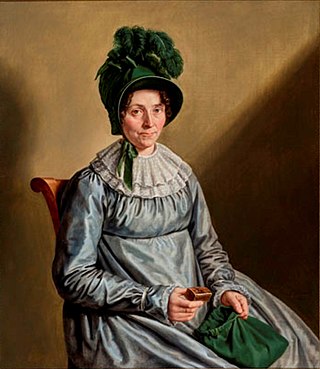
François Xavier Joseph Jacquin or Frans Jaquin was a Flemish painter and draughtsman known for his portraits, still lifes and landscapes. He was in demand as a portrait painter of religious dignitaries, the nobility and the bourgeoisie. As a still life painter he created game pieces and trompe-l'œil still lifes of game birds.

Gillis Claeissens or Egidius Claeissens was a Flemish painter of portraits and altarpieces and a member of a prominent family of artists originating in Bruges. It has only been possible to distinguish Gillis Claeissens' work from that of his father and siblings after scholars discovered a contract with the artist for the painting of a triptych. It was further discovered in 2015 that he artist can be identified with the Monogrammist G.E.C. These discoveries have allowed to recognise Gillis Claeissens as an important portraitist alongside Pieter Pourbus in 16th century Bruges.

Petrus Johannes van Reysschoot or Pieter van Reysschoot was a Flemish painter and printmaker who is known for his genre scenes, hunting scenes, landscapes, portraits and Christian religious subjects. He spent a large part of his career in England, which earned him the nickname den Engelschman. In England he painted history and sporting scenes and was a portrait painter working on commissions particularly from the Midlands gentry.

Charles Van Havermaet or Karel Van Havermaet was a Belgian draughtsman, painter and illustrator.He is mainly known for his genre scenes, portraits, still lifes and allegorical paintings. After training in his native Antwerp he spent the rest of his career in London.























